How cattle are helping rare butterflies to thrive at Mabie Forest
- Published
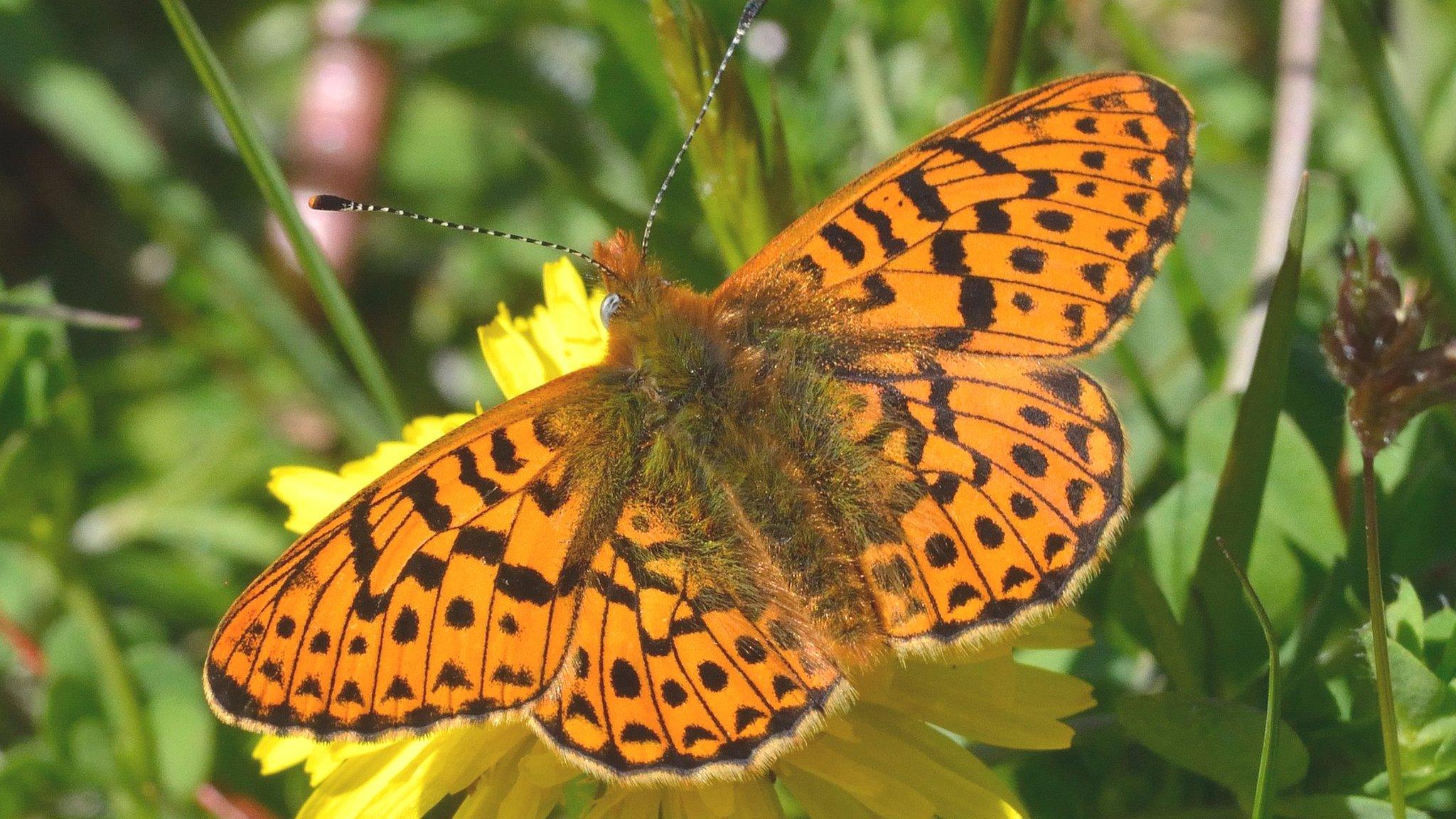
The pearl-bordered fritillary has seen a steady rise in numbers at Mabie Forest
A forest in the south of Scotland is seeing a rare butterfly thrive thanks to a surprising friend.
The distinctive Belted Galloway cattle are being used to help the pearl-bordered fritillary flourish.
The last full survey at Mabie Forest near Dumfries in 2019 found numbers had more than doubled on the previous year.
Forestry and Land Scotland (FLS) has been using a range of methods to help the local colony - including letting the heavy cattle in to graze.
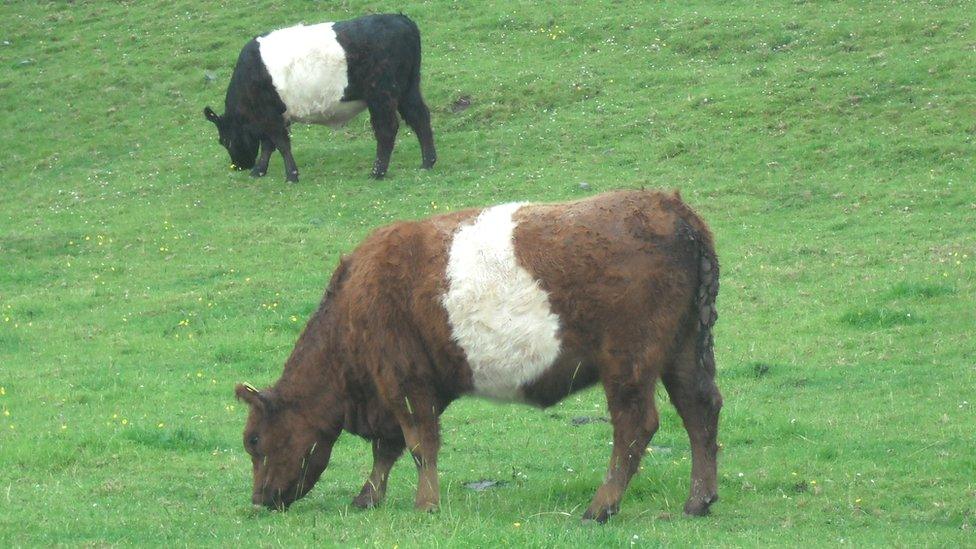
FLS works with nearby farmers who let their cattle graze on the land
The pearl-bordered fritillary has seen numbers rapidly decline across Britain and Ireland, although the fall has been less marked in Scotland.
However, it was still identified in the Scottish Forestry Strategy 15 years ago as one of the country's six priority species.
The forest in Dumfries and Galloway has been at the front line of fighting its corner.
A team of FLS staff manage the vegetation at the forest fringes from April to September to encourage the ground conditions that the butterflies need to thrive.

They also allow a herd of Belted Galloways to keep the grass from getting too long and to create the sort of wet habitat and muddy hollows that the butterflies like.
FLS regional environment advisor Bill Coombes said the story went back to the mid-1990s when - working with Butterfly Conservation Scotland (BCS) - Mabie was identified as having a good habitat for biodiversity in general and butterflies in particular.
Environmental work was carried out to allow wild flowers and grasses to develop.

Mabie has one of Scotland's biggest colonies of the butterfly
"To encourage particularly butterflies we have also done some enrichment planting with things like rock rose and dog violet which are particularly attractive as food sources for these butterflies and their caterpillars," he said.
"The numbers of the pearl-bordered fritillary have increased dramatically over the years.
"Of course all it takes is a cold wet spring and the numbers can drop off again," he said.
However, he said numbers had gone from 145 recorded in 2017 up to more than 400 in 2019 - which showed that the general trend was upwards and was good news for the species.

Heavy cattle help to produce the conditions the "really fussy" butterflies like
Mr Coombes said heavy cattle had played their part in supporting one of Scotland's biggest colonies.
"Normally in an open grass area, the coarse grasses will take over and gradually push out the wild flowers," he said.
"So having something like the hardy Belted Galloway, they tear up the grass as they are grazing and when they are walking across the site they also break it up, exposing bare ground.
"They give a seed bed to the wild flowers to come in and give them a chance to produce the food for the caterpillars and also for the butterflies themselves.
"It is using a natural system which would have been there in the past as well."
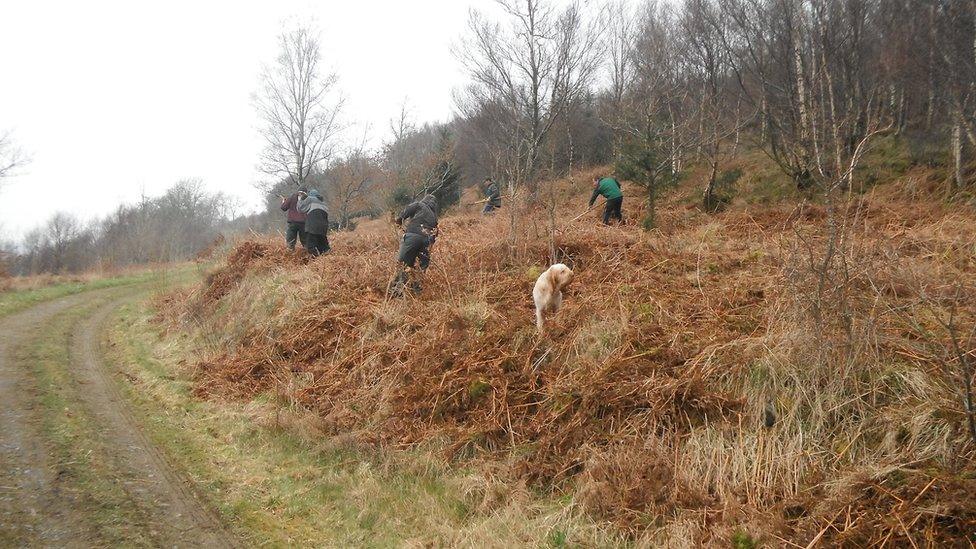
FLS has been working on encouraging butterfly numbers for more than two decades
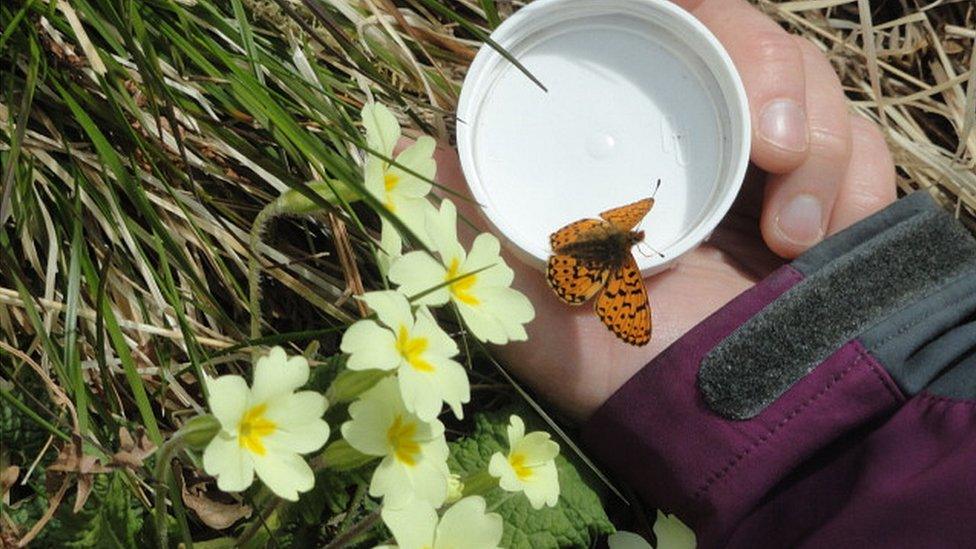
Counts have recorded a steady increase in numbers of the pearl-bordered fritillary
Tom Prescott, BCS senior conservation officer, said the work which had been done was paying off for the pearl-bordered fritillary.
"They are very much a threatened species, they are a priority species - they are on the Scottish biodiversity list and they are a high priority in the BCS conservation strategy," he said.
"Mabie is probably one of the best sites in Scotland, possibly one of the best sites in the UK.
"It is a species that is still declining in lots of parts of the country but it seems to be bucking the trend at Mabie.
"That is probably almost entirely due to the wonderful work that FLS have been doing."
Mr Prescott said rare butterflies and moths were "really, really fussy".
"What pearl-bordered fritillary require is their caterpillars only feed on dog violet and - more than that - the dog violet has to be in a really warm microclimate," he said.
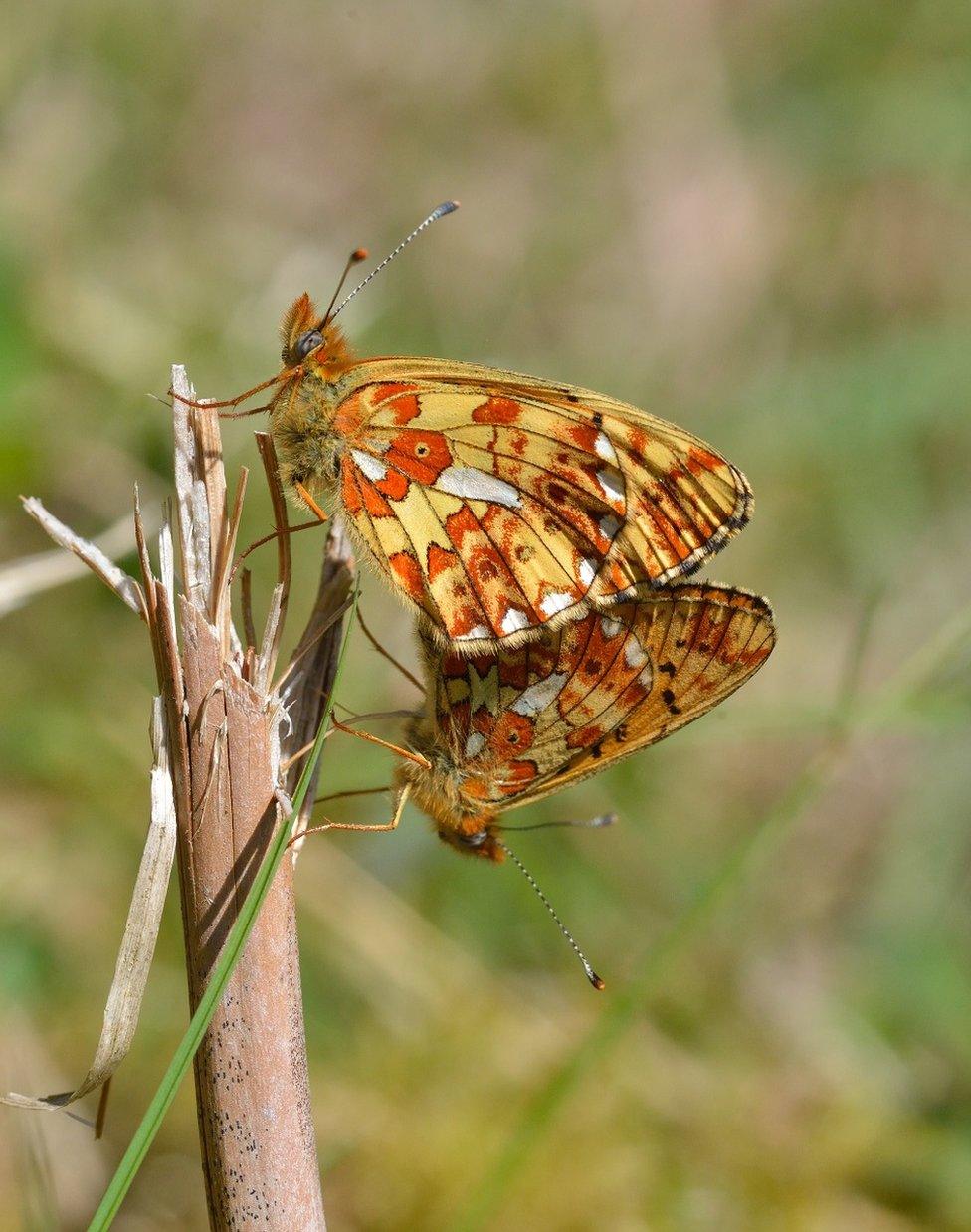
The species is declining in a lot of other parts of the UK
He said that made what was being done at Mabie "very significant".
"So often we are talking about declines of species and being lost from sites so it is really, really nice to report on a species that is doing well," he said.
He said other species, too, were thriving at Mabie such as the forester moth.
Mr Prescott added that the role that nearby livestock were playing was "well known in butterfly circles".

The forester moth has also flourished in the conditions at Mabie
"I spend a good deal of my time talking to farmers encouraging them to get more cattle - particularly species like Belted Galloway and Highland cattle - traditional breeds that are hardy enough and able to stay outside," he said.
"Just a few cattle, it just keeps some of these areas really open.
"Where they are walking and they are trampling that creates little areas of bare ground where their hoof prints are and then that is ideal for a germination site for violets or for nectar plants."
At Mabie Forest, it is also allowing their much smaller and more fragile neighbours to flourish.
All images are copyrighted.